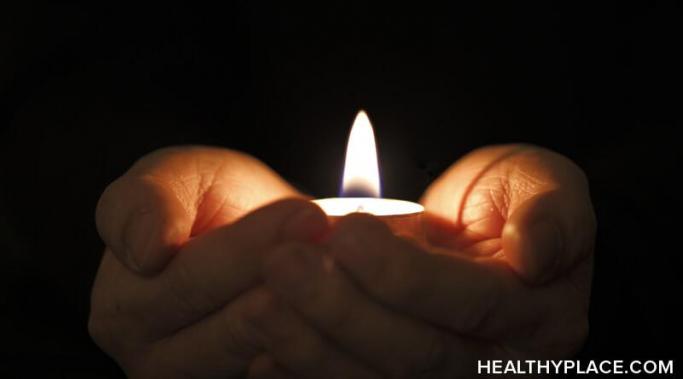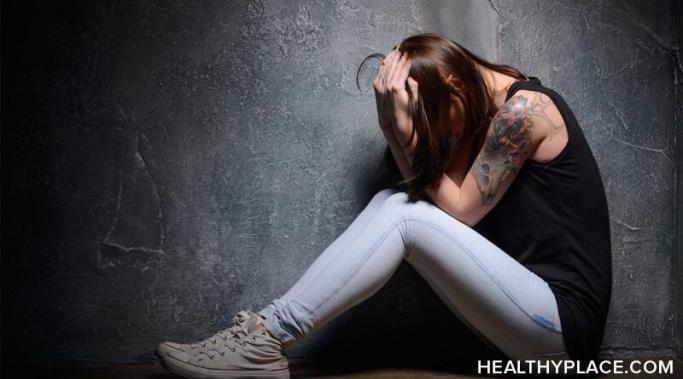Softening the impact of borderline personality disorder (BPD) triggers means creating a buffer against the onslaught of emotional turbulence. For instance, rather than succumbing to impulses, I channel my energy into soothing activities like taking a warm bath, and I substitute self-harm with self-nurturance. Yet, life isn't always so neatly compartmentalized. There are moments when triggers ambush me mid-sentence, and the simple rituals of daily life offer little sanctuary. In these instances, my anchor is in the art of coping ahead to soften the impact of BPD triggers.
Suicide - Borderline
Did you know that the most helpful treatment for borderline personality disorder (BPD) is age? According to a 16-year-long study, 88 percent of patients no longer met the "Diagnostic and Statistical Manual of Mental Disorders" criteria for BPD after eight years, while 99 percent remitted after 16 years. I just turned 30 myself, and my BPD symptoms have greatly improved over the past 12 years. This is my experience with BPD since becoming an adult.
Did you know that burnout is common for individuals with borderline personality disorder (BPD)? In this article, I talk about how I used hard work as an unhealthy coping mechanism and what happened when it all came crashing down, and burnout came for me.
Surviving borderline personality disorder (BPD) is no small victory. I am incredibly grateful to myself for choosing life at a time when my pain seemed infinite. Last time I spoke about why I did not consider suicide as a child. This time, I talk about why I did consider suicide as an adult. (Note: This post contains a trigger warning.)
All too often, borderline personality disorder (BPD) and suicidal ideation go hand-in-hand, and I am no exception. I am grateful today that I survived my childhood and early adult years, but it was not easy. This is my experience with suicide before I knew I had BPD. (Note: This post contains a trigger warning.)
Suicidal thoughts are a huge part of my life with borderline personality disorder. Even though I have them less frequently than I used to, they can still cause me a lot of distress. Here are my four tips for managing suicidal thoughts.
I've experienced suicidal thoughts with borderline personality disorder (BPD), so I thought I'd share my experience and some facts about suicide and BPD. The topic of suicide has received a large amount of attention in the media as of late with celebrity suicides. With the death of Kate Spade and Anthony Bourdain, it’s brought up old experiences and feelings about my own history as a woman living with borderline personality disorder. While I don’t feel this way today, I am no stranger to the feeling of not wanting to be alive. Self-harm, suicide attempts and suicidal thoughts are a part of living with borderline personality disorder. They are a distinguishing symptom when making this diagnosis. In the vein of opening up a conversation about suicide awareness, I’m going to share some important suicide facts and personal experience about suicidal thoughts and borderline personality disorder. Most importantly, I will share my hope.
I became suicidal while on active duty in the Army. What happened next was a classic example of how not to help a suicidal person.
It's news that leaves you morose--Robin Williams, the comedian and actor who brought us Mrs. Doubtfire and Patch Adams, is dead from an apparent suicide. The news made me reflect on my battle with borderline personality disorder (BPD) and my own thoughts of suicide. There are three lessons to learn - know when to ask for help, keep on seeking help, and always remember that suicide is often a permanent solution to a temporary problem.
I was diagnosed with severe mental illness while I was a sophomore in college. I was suicidal, which prompted an emergency psychiatric evaluation. Unfortunately, it also prompted eviction from the dorm and suspension from school. I later got the director of the counseling center to admit--on the record--that the policy was more for the benefit of other students than the suicidal student. It was not the most compassionate of policies. So how can colleges and universities help students with mental illness?









